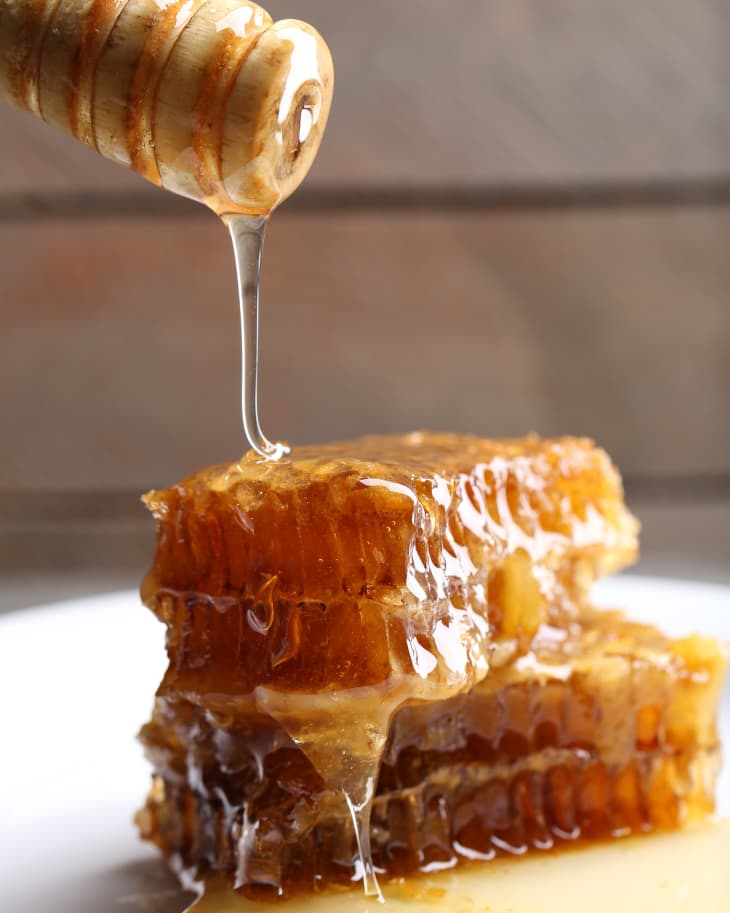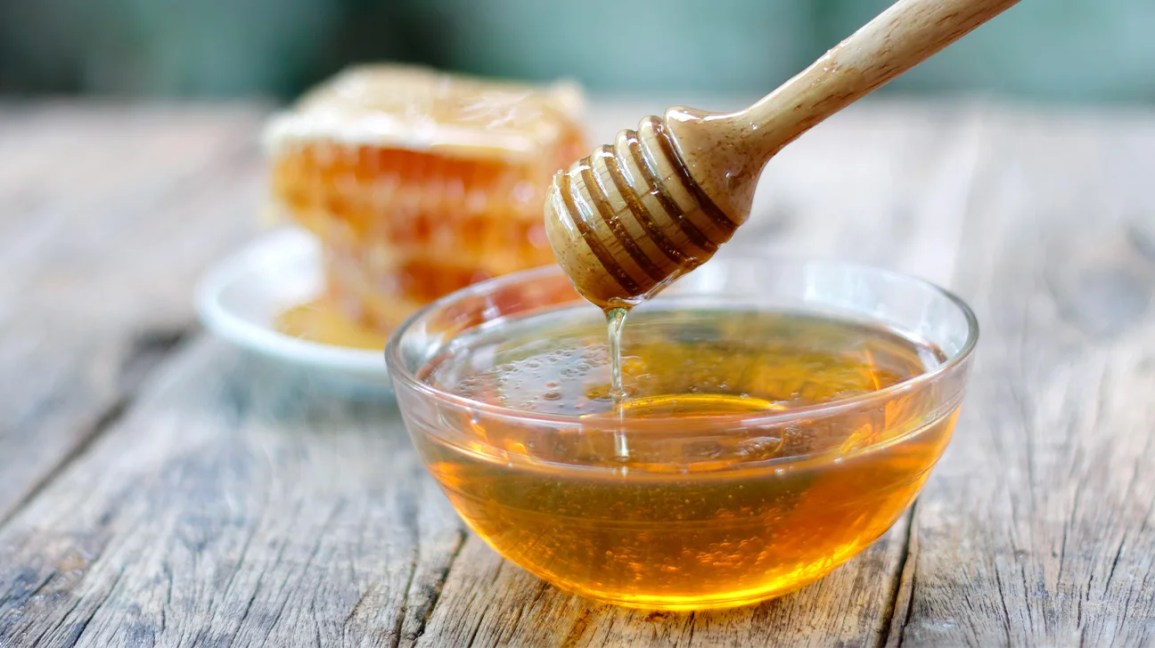
Imagine adding a touch of sweetness to your favorite desserts that not only satisfies your taste buds but also offers a range of health benefits. Well, look no further than honey – the liquid gold of baking! In this article, you will learn how to elevate your desserts with honey, exploring its versatility, natural goodness, and the amazing flavors it can bring to your baking creations. Get ready to embark on a delicious journey that will leave your desserts buzzing with incredible flavor!
This image is property of cdn.apartmenttherapy.info.
Benefits of Using Honey in Baking
Enhances Flavor
When it comes to baking, flavor is everything. And by incorporating honey into your recipes, you can take your desserts to a whole new level. The rich, natural sweetness of honey adds depth and complexity to your baked goods, enhancing the overall taste and making them more enticing to your taste buds. Whether you’re making a simple honey cake or honey cookies, the flavor profile of honey is sure to leave a lasting impression on anyone who takes a bite.
Moisture and Texture
One of the most significant benefits of using honey in baking is its ability to retain moisture. Honey acts as a humectant, which means it attracts and retains water, keeping your baked goods moist and fresh for longer periods. This is especially beneficial for desserts like cakes and cookies, preventing them from drying out too quickly. Additionally, honey helps to improve the texture of your baked goods, making them soft and tender, while also providing a slight chewiness that adds an enjoyable mouthfeel.
Natural Sweetener
In addition to enhancing flavor, honey acts as a natural sweetener in baking. Unlike refined sugar, honey contains trace amounts of vitamins, minerals, and antioxidants, making it a healthier alternative. Its natural sweetness is released slowly during the baking process, resulting in a more balanced and even taste throughout your desserts. Whether you’re trying to reduce your sugar intake or looking for a more wholesome choice, using honey as a sweetener can be an excellent option for your baking needs.
Health Benefits
Apart from its flavor-enhancing and sweetening properties, honey also provides various health benefits. It contains antioxidants that can help protect your body from free radicals, which are known to contribute to chronic diseases. Honey also has antibacterial properties, aiding in digestion and boosting the immune system. While it’s important to consume honey in moderation, incorporating it into your baking can be a delicious way to add a dose of natural goodness to your desserts.
Choosing the Right Honey for Baking
Types of Honey
When it comes to choosing the right honey for your baking endeavors, you’ll be pleasantly surprised by the variety of options available. Honey flavors can range from light and mild to robust and intense, depending on the nectar source. Some popular types of honey include clover, orange blossom, wildflower, and buckwheat. Each type has its own distinct flavor profile, allowing you to experiment and find the perfect match for your desired recipe.
Floral Varieties
Within each type of honey, there are various floral varieties to explore. For example, within clover honey, you can find white clover, red clover, and sweet clover varieties. Each floral variety contributes its own unique flavors and aromas to the honey, which can further enhance the taste of your baked goods. Whether you’re looking for a delicate floral note or a more robust and earthy flavor, there’s a honey variety out there to suit your preferences.
Raw vs. Processed Honey
When selecting honey for baking, you might also come across the terms “raw” and “processed.” Raw honey is unfiltered and unheated, meaning it retains more of its natural enzymes and beneficial compounds. It may have a thicker consistency and a cloudy appearance due to the presence of pollen and other particles. Processed honey, on the other hand, undergoes filtration and pasteurization to remove any impurities and ensure a smoother texture. Both types of honey can be used in baking, so the choice ultimately depends on your personal preferences and desired texture for your desserts.
Substituting Honey in Recipes
Measurement Conversion
If you’re considering substituting honey for another sweetener in your recipes, it’s important to know the proper measurement conversion. As honey is denser and sweeter than other sweeteners, a general rule of thumb is to use ¾ cup of honey for every 1 cup of granulated sugar. Additionally, you’ll need to reduce the added liquids in the recipe by about ¼ cup to account for the additional moisture content of the honey. Keep in mind that these measurements may vary slightly depending on the specific recipe and the desired sweetness level.
Adjusting Other Ingredients
When substituting honey in recipes, it’s essential to consider its impact on other ingredients. Honey is slightly acidic, so you may need to add a pinch of baking soda to balance out the acidity and ensure proper rising of your baked goods. Additionally, honey tends to brown faster than other sweeteners, so you might need to reduce the oven temperature and baking time to prevent overbrowning. Experimenting and adjusting the other ingredients accordingly will help you achieve the desired texture and taste in your honey-infused treats.
Honey as a Binding Agent
Replacing Eggs
For individuals following a vegan or vegetarian diet, or those with allergies or dietary restrictions, honey can serve as an excellent alternative to eggs when it comes to binding ingredients in baking. In most recipes, you can substitute one egg with ¼ cup of honey. However, keep in mind that the substitution may affect the texture and rise of your baked goods, so adjusting other ingredients or using additional binding agents like applesauce or mashed banana may be necessary.
Binding Dry Ingredients
In addition to replacing eggs, honey can also act as a binding agent for dry ingredients in recipes such as granola bars or energy balls. The stickiness of honey helps hold the ingredients together, allowing you to create delicious and nutritious snacks without the need for additional binders. Its natural sweetness and flavor also contribute to the overall taste and enjoyment of these homemade treats.
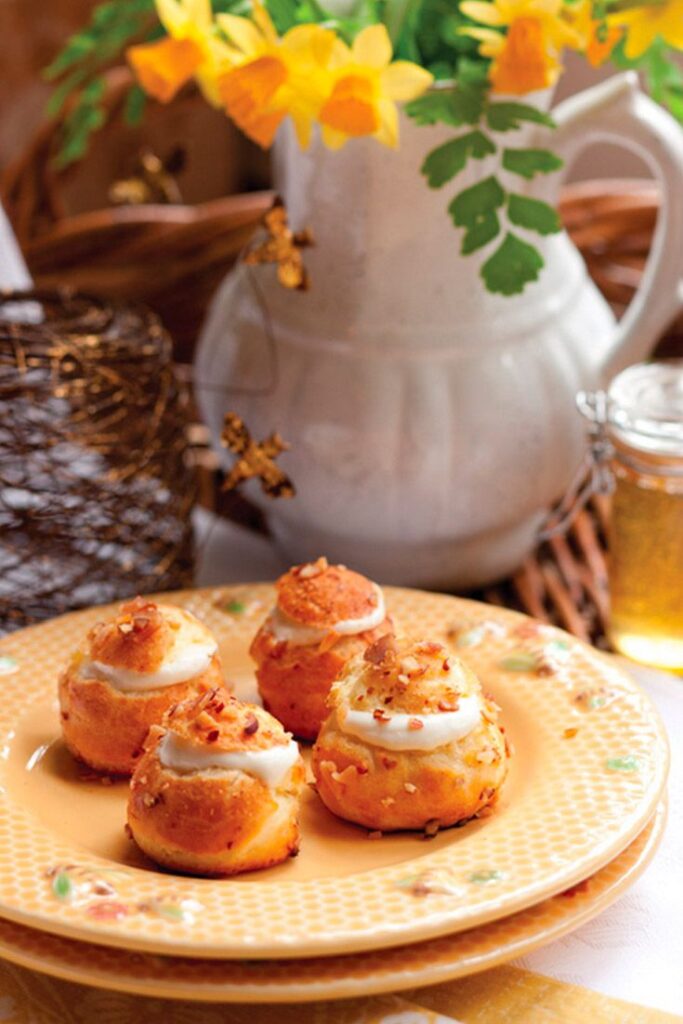
This image is property of i.pinimg.com.
Honey-Based Dessert Recipes
Honey Cake
Honey cake is a classic dessert that showcases the rich and robust flavor of honey. It’s often moist and fragrant, thanks to the addition of spices like cinnamon, ginger, or nutmeg. Whether you choose to make a simple honey loaf cake or a multi-layered honey sponge cake, this recipe is sure to impress your friends and family. Top it off with a drizzle of honey glaze or a dusting of powdered sugar for an extra touch of sweetness.
Honey Cookies
If you’re a fan of cookies, why not give them a honey twist? Honey cookies offer a delightful combination of softness and chewiness, with a subtle sweetness that’s hard to resist. With just a few simple ingredients like flour, butter, and, of course, honey, you can create a batch of delicious honey cookies that will have everyone reaching for seconds. Consider adding in some dried fruits, nuts, or chocolate chips to add extra texture and flavor.
Honey Pudding
For a creamy and comforting dessert, honey pudding is the way to go. This luscious dessert is made by combining honey, milk, and cornstarch to create a thick and velvety pudding. The natural sweetness of the honey shines through, making it a perfect treat to enjoy on its own or as a base for other toppings like fresh fruits, crushed nuts, or a dollop of whipped cream. Serve chilled for a refreshing dessert or warm for a cozy and indulgent experience.
Tips for Using Honey in Baking
Measuring and Pouring
When working with honey, its sticky consistency can make it challenging to measure accurately. To ensure you’re using the right amount, lightly coat your measuring cup or spoon with cooking spray or oil before pouring in the honey. This will help the honey slide off easily, without leaving any residue behind. Alternatively, you can dip the measuring utensil in hot water to warm it up, making the honey flow more smoothly. It’s also a good idea to have a flexible spatula on hand to scrape out every last bit of honey, minimizing waste and ensuring you get the most out of this liquid gold.
Combining with Other Sweeteners
While honey is a fantastic sweetener on its own, you can also combine it with other sweeteners to achieve a more complex and balanced taste. For example, using a combination of honey and brown sugar can add a rich caramel-like flavor to your baked goods. Similarly, incorporating honey into recipes that call for molasses, maple syrup, or agave nectar can create unique flavor profiles that elevate your desserts to new heights. Don’t be afraid to experiment and find the perfect sweetener combination that suits your palate.
Temperature Considerations
Honey can be sensitive to heat, and exposure to high temperatures can affect its flavor and nutrients. When using honey in baking, it’s generally best to choose recipes that require temperatures below 300°F (150°C). This will help retain the natural qualities of honey and prevent any potential bitter or burnt flavors. However, if a recipe calls for higher temperatures, you can still incorporate honey by reducing the overall baking time and using a lower temperature setting to minimize the risk of overbrowning or compromising the taste.
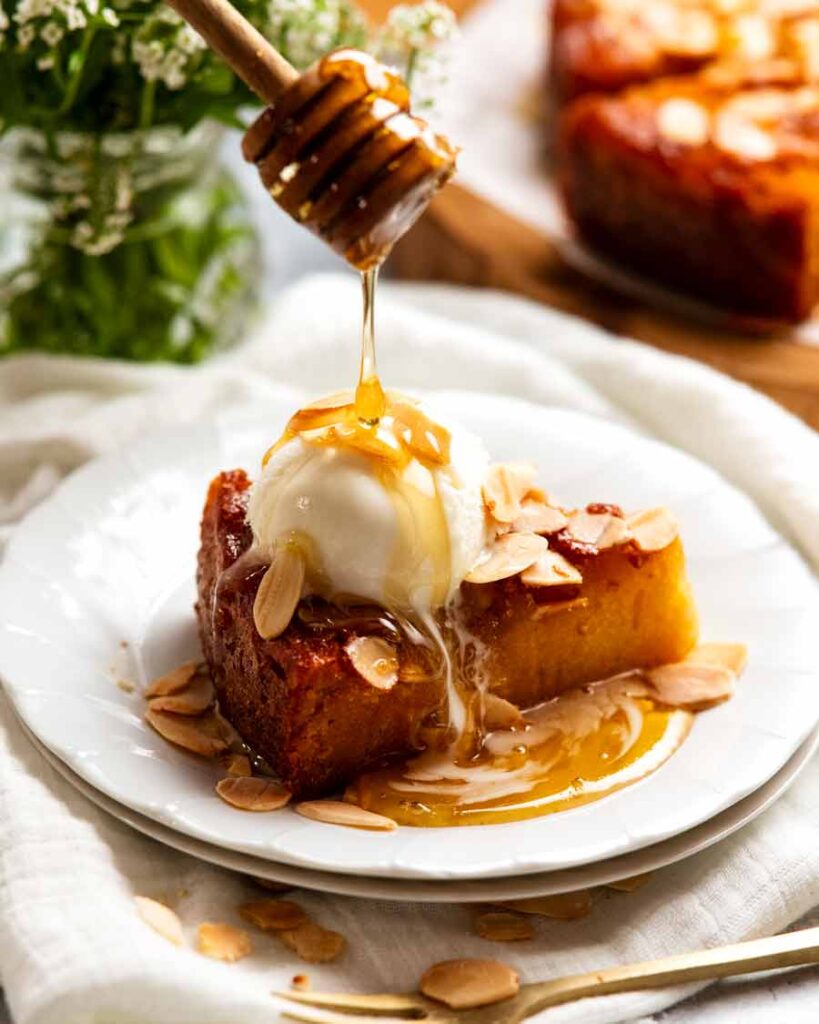
This image is property of www.recipetineats.com.
Storage and Shelf Life
Proper Storage
To ensure the longevity and quality of your honey, it’s crucial to store it properly. Ideally, honey should be kept in a cool, dry place at room temperature, away from direct sunlight and heat sources. Avoid storing honey in the refrigerator, as it can cause the honey to crystallize and harden. It’s also important to seal the honey tightly to prevent any moisture from entering, as this can promote fermentation or spoilage. By following these simple storage practices, you can keep your honey fresh and ready to use for an extended period.
Determining Shelf Life
Honey has an exceptionally long shelf life, thanks to its naturally low moisture content and high acidity. When stored properly, honey can easily last for months or even years without spoiling. While honey does not necessarily go bad, over time, it may undergo changes in color and texture. These changes are normal and do not necessarily indicate spoilage. However, if you notice any signs of mold, fermentation, or an off-putting odor, it’s best to discard the honey to ensure your safety and enjoyment.
Using Honey in Gluten-Free and Vegan Baking
Gluten-Free Options
For individuals following a gluten-free diet, baking can sometimes present challenges. However, honey provides an excellent option for adding moisture and sweetness to gluten-free recipes. When combined with gluten-free flours like almond flour, coconut flour, or rice flour, honey helps bind the ingredients together and create a moist, tender texture. Whether you’re making gluten-free cookies, bread, or cake, incorporating honey can result in delicious gluten-free treats that everyone can enjoy.
Vegan Substitutions
In vegan baking, honey is often replaced with plant-based alternatives such as maple syrup, agave nectar, or molasses. However, if you prefer to use honey in your vegan recipes, there are simple substitutions you can make to ensure the recipe remains dairy-free and egg-free. As mentioned earlier, honey can serve as a binding agent in place of eggs. Additionally, you can swap butter with coconut oil or vegan margarine to achieve the desired texture and richness. By making these small adjustments, you can create vegan-friendly desserts that are both delicious and inclusive.
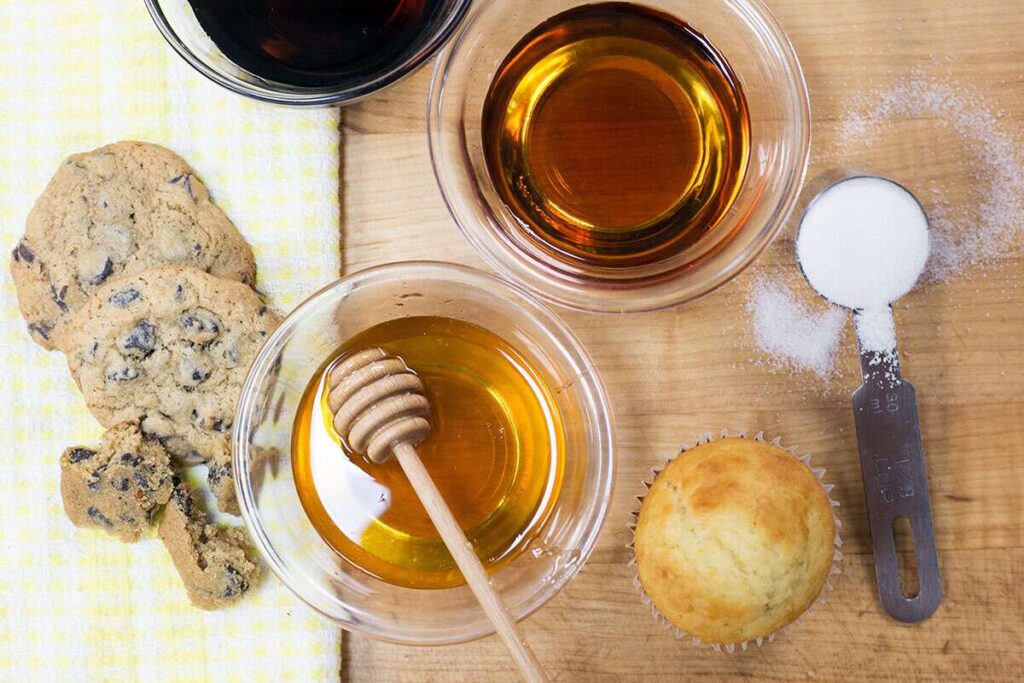
This image is property of www.kingarthurbaking.com.
Pairing Honey with Other Ingredients
Nuts and Seeds
Honey pairs beautifully with a wide array of nuts and seeds, providing depth, texture, and complexity to your baked goods. Whether you’re making honey almond cake, honey pecan cookies, or honey sesame bars, the combination of honey and nuts or seeds creates a delightful contrast of flavors and adds a satisfying crunch. Consider toasting the nuts or seeds before incorporating them into your recipes to enhance their natural flavors further.
Herbs and Spices
If you want to infuse your desserts with an aromatic twist, try pairing honey with herbs and spices. From lavender and rosemary to cinnamon and ginger, these flavorful additions can elevate the taste of your baked goods to a whole new dimension. Add a sprinkle of dried herbs or a pinch of ground spice to your honey-based recipes, such as honey lavender scones or honey cinnamon bread, and prepare to be pleasantly surprised by the delightful combination of sweet and savory flavors.
Fruits and Berries
When it comes to fruit-based desserts, honey can act as the perfect complement to your favorite fruits and berries. Whether you’re making a honey apple pie, honey peach cobbler, or honeyberry muffins, the natural sweetness of honey enhances the flavors of the fruits, resulting in a harmonious combination. You can use honey as a glaze, a sweetener in fruit fillings, or even as a drizzle over the finished dessert to add a touch of extra sweetness and create a visually pleasing presentation.
Experimenting with Flavors
Infusing Honey with Flavors
If you’re feeling adventurous and want to take your baking to the next level, why not try infusing honey with various flavors? By adding ingredients like vanilla beans, citrus zest, or even chili peppers to a jar of honey and letting the flavors meld together over time, you can create a truly unique and customized honey infusion. Use your flavored honey in recipes like honey-infused buttercream frosting or as a topping for pancakes, waffles, or yogurt to add a burst of flavor that will surprise and delight your taste buds.
Creating Unique Combinations
When it comes to baking with honey, there’s no shortage of opportunities to create unique flavor combinations. Consider experimenting with different ingredients to find unexpected pairings that complement each other harmoniously. For example, try combining honey with balsamic vinegar for a tangy-sweet glaze or mix honey, tahini, and dark chocolate for a delectable flavor profile. The possibilities are endless, so let your creativity guide you as you explore the endless combinations that honey has to offer in the world of baking.
In conclusion, incorporating honey into your baking endeavors provides a multitude of benefits, from enhancing flavor and moisture to serving as a natural sweetener with health benefits. By choosing the right honey, substituting it in recipes, using it as a binding agent, and exploring various honey-based dessert recipes, you can elevate your desserts to new heights. With the right tips for using honey, proper storage practices, and considerations for gluten-free, vegan, and flavor pairings, you can unlock the full potential of this liquid gold in your baking creations. So go ahead and embrace the sweetness of honey in your next baking adventure – your taste buds will thank you!

This image is property of snapshotsincursive.files.wordpress.com.
